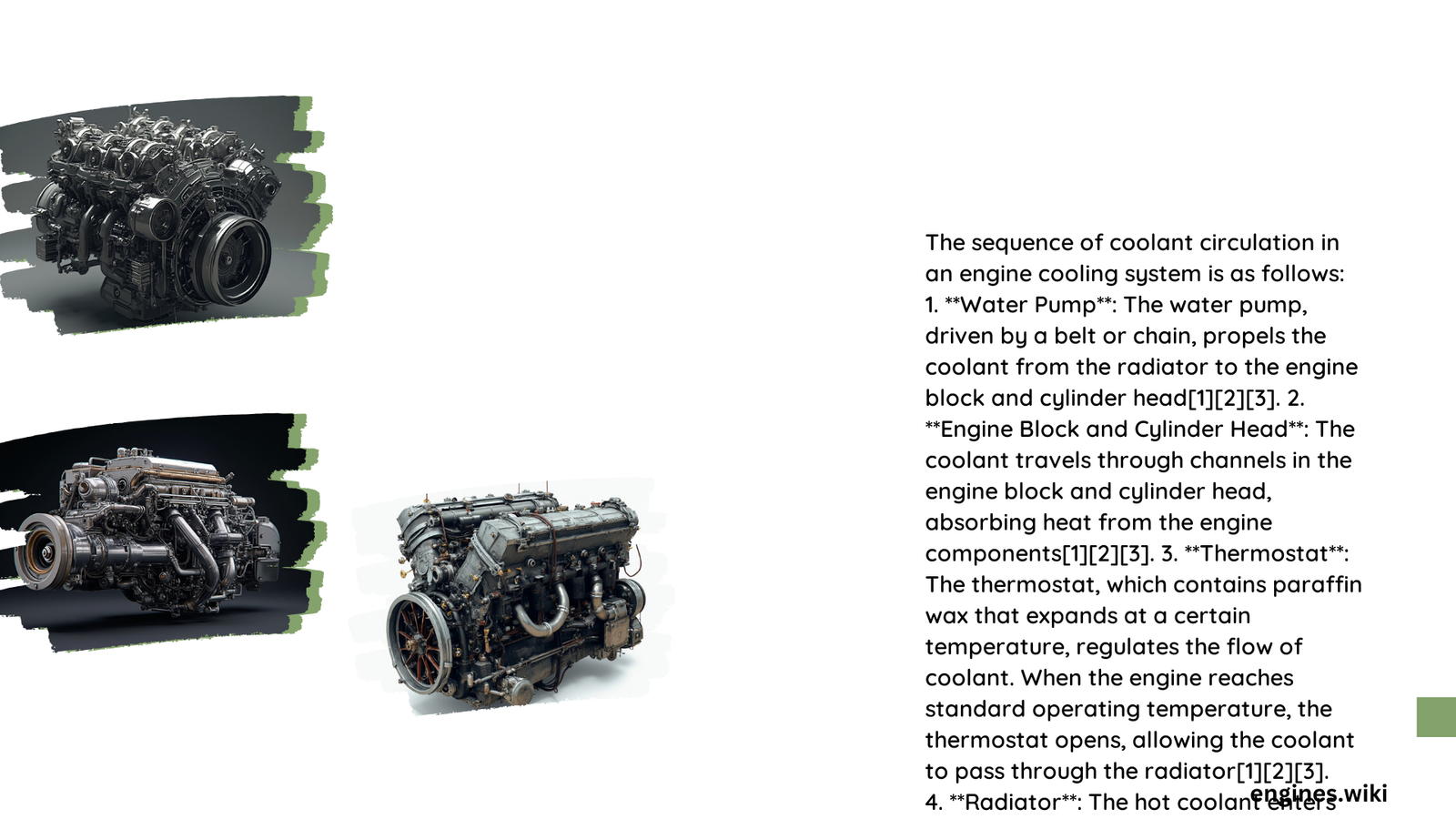The engine cooling system represents a critical thermal management network where coolant follows a precise, engineered path to prevent overheating and maintain optimal engine performance. Coolant circulates through interconnected components using centrifugal force and temperature-responsive mechanisms, transferring heat from critical engine regions while maintaining consistent operational temperatures through a sophisticated thermal exchange process.
What Drives the Initial Coolant Movement?
The water pump serves as the primary mechanical driver in the coolant circulation sequence. Typically mounted on the engine’s front and powered by a serpentine belt or timing chain, this component uses centrifugal force to initiate and sustain coolant movement.
Key Water Pump Characteristics
| Component | Function | Performance Metric |
|---|---|---|
| Impeller | Generates Coolant Flow | 10-20 Gallons/Minute |
| Drive Mechanism | Power Transmission | Belt/Chain Driven |
| Operational RPM | Flow Rate Determinant | Proportional to Engine Speed |
How Does Coolant Enter the Engine Block?

Coolant enters the engine block through specific pathways designed to maximize heat absorption:
- Enters via water pump outlet
- Flows through precision-engineered water jackets
- Surrounds cylinder walls
- Absorbs combustion and mechanical heat
- Maintains temperature between 190-220°F
Where Does Thermal Transfer Occur?
The primary thermal transfer happens in two critical zones:
- Engine Block
- Direct contact with cylinder walls
- Absorbs primary combustion heat
-
Initial temperature elevation occurs here
-
Cylinder Heads
- Captures heat from combustion chambers
- Manages valve seat temperatures
- Prevents localized overheating
What Controls Coolant Flow Regulation?
The thermostat acts as a sophisticated temperature-responsive valve:
- Opens at predetermined temperature (180-195°F)
- Blocks radiator flow during cold engine conditions
- Enables full circulation when optimal temperature achieved
- Prevents premature coolant circulation
How Does Radiator Heat Dissipation Work?
Radiator design enables efficient thermal exchange:
- Large surface area with thin tubes
- Horizontal/vertical coolant flow patterns
- Airflow-driven cooling mechanism
- Temperature reduction from 195°F to 160-180°F
What Completes the Circulation Cycle?
The final stage involves returning cooled coolant to the water pump:
- Exits radiator bottom section
- Drawn back into water pump inlet
- Prepares for subsequent circulation cycle
- Maintains continuous thermal management
Potential Circulation Challenges
- Cavitation: Vapor pocket formation
- Pump Wear: Reduced efficiency
- Blockages: Restricted flow paths
- Thermostat Failure: Irregular temperature control
Technical Specifications
- Average Coolant Flow Rate: 38-76 Liters/Minute
- Typical Operating Temperature: 190-220°F
- Circulation Cycle Duration: Continuous during engine operation
Maintenance Recommendations
- Regular coolant system inspections
- Periodic thermostat replacement
- Water pump seal integrity checks
- Consistent coolant quality monitoring
Conclusion
Understanding the sequence of coolant circulation provides insights into complex thermal management strategies employed in modern internal combustion engines.
